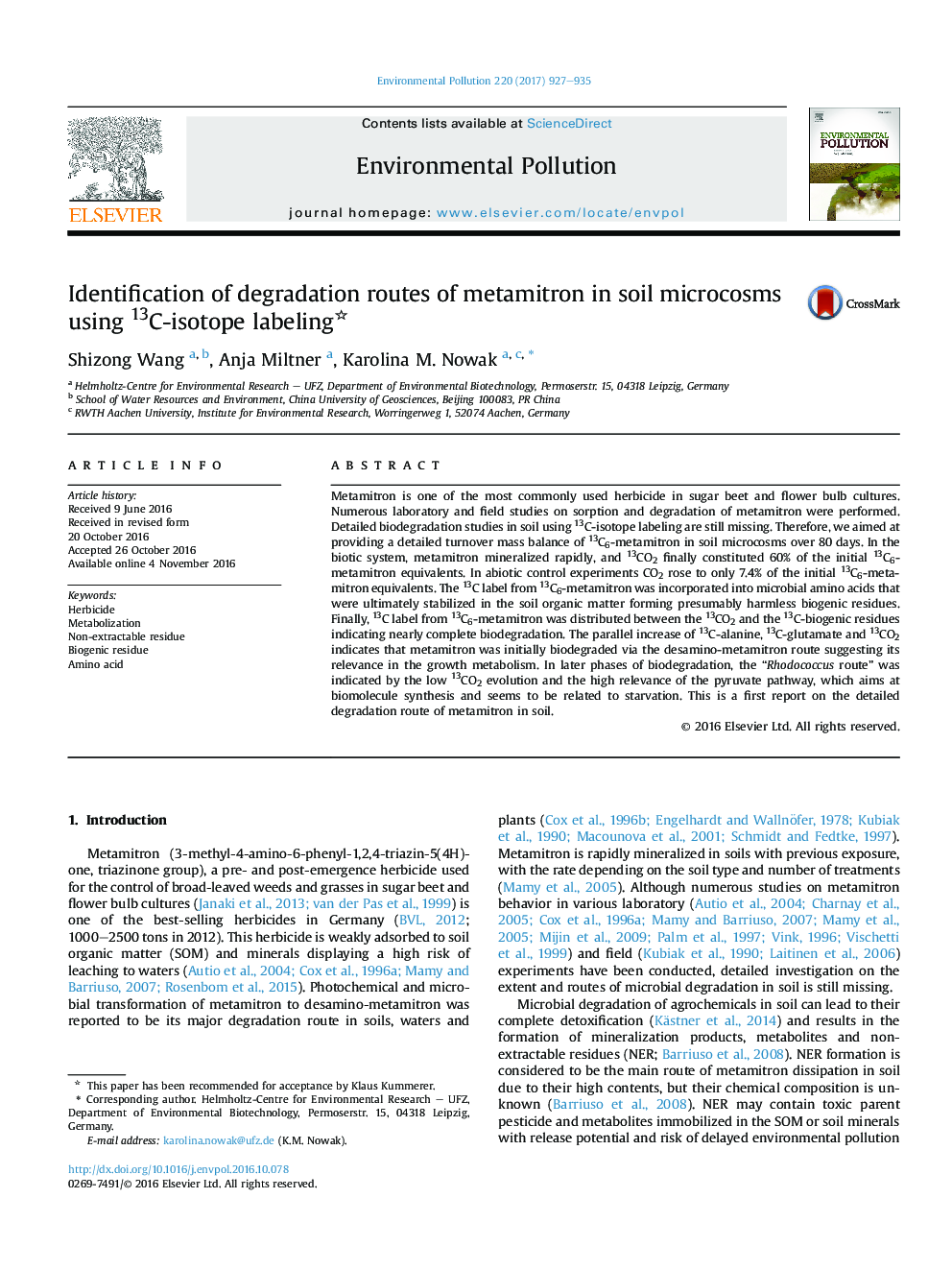| Article ID | Journal | Published Year | Pages | File Type |
|---|---|---|---|---|
| 5749521 | Environmental Pollution | 2017 | 9 Pages |
â¢First detailed report on 13C6-metamitron turnover mass balance in soil.â¢13C6-metamitron was ultimately degraded to CO2 and biogenic residues.â¢Metamitron was biodegraded via two routes: desamino-metamitron and “Rhodococcus”.â¢Desamino-metamitron route was assigned to growth metabolism.⢓Rhodococcus” route was related to starvation metabolism.
Metamitron is one of the most commonly used herbicide in sugar beet and flower bulb cultures. Numerous laboratory and field studies on sorption and degradation of metamitron were performed. Detailed biodegradation studies in soil using 13C-isotope labeling are still missing. Therefore, we aimed at providing a detailed turnover mass balance of 13C6-metamitron in soil microcosms over 80 days. In the biotic system, metamitron mineralized rapidly, and 13CO2 finally constituted 60% of the initial 13C6-metamitron equivalents. In abiotic control experiments CO2 rose to only 7.4% of the initial 13C6-metamitron equivalents. The 13C label from 13C6-metamitron was incorporated into microbial amino acids that were ultimately stabilized in the soil organic matter forming presumably harmless biogenic residues. Finally, 13C label from 13C6-metamitron was distributed between the 13CO2 and the 13C-biogenic residues indicating nearly complete biodegradation. The parallel increase of 13C-alanine, 13C-glutamate and 13CO2 indicates that metamitron was initially biodegraded via the desamino-metamitron route suggesting its relevance in the growth metabolism. In later phases of biodegradation, the “Rhodococcus route” was indicated by the low 13CO2 evolution and the high relevance of the pyruvate pathway, which aims at biomolecule synthesis and seems to be related to starvation. This is a first report on the detailed degradation route of metamitron in soil.
Graphical abstractDownload high-res image (226KB)Download full-size image
